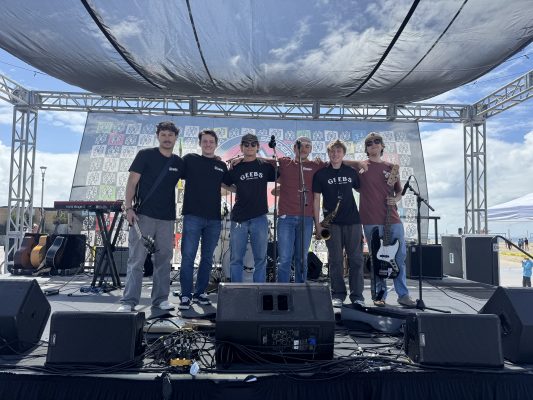You’re here because you’re wondering, “Is there any way to make USCIS move faster?” And honestly? Fair question. The waiting game is frustrating, but the great thing is—you can absolutely speed things up.
Enter Form I-907, your way to skip the endless backlog (for certain visa types, of course). Pay the extra fee, file the form, and boom—your petition gets prioritized.
Sounds easy? It is—but only if you qualify and file it correctly.
In this guide, we’re breaking down everything you need to know about Form I-907, from who can use it to how it saves you time and money.
By the end, you’ll know exactly how to put this form to work for you.
Let’s get into it.
-
What Is I-907 Form For?
Have you ever dealt with U.S. immigration? If you have, then you know one thing: waiting is brutal.
We’re talking months of checking your case status, refreshing emails, and hoping for an update. Overall, it’s a nightmare.
That is, unless you put in the official request for premium processing service. And the way to do it?
Through Form I-907, of course.
You see, Form I-907 is a service from USCIS meant to speed things up for certain visa petitions and applications (mostly work visas like H-1B, L-1, O-1, and employment-based green cards). Instead of waiting in the standard backlog, you pay an extra fee, fill this form, and jump to the front of the line.
Easy.
-
Who Can File I-907 Form?
Unfortunately, not everyone can throw money at USCIS to fast-track their case.
In fact, USCIS only allows premium processing for specific petitions, mostly related to work visas and employment-based green cards.
Basically, if your immigration status is tied to a job, there’s a good chance you qualify. The most common categories include:
- H-1B (Specialty Occupations) – The go-to visa for professionals in tech, finance, engineering, and more. This visa is often used by companies hiring foreign talent.
- L-1 (Intracompany Transfers) – For employees transferring to a U.S. office of the same company.
- O-1 (Individuals with Extraordinary Ability) – Think award-winning scientists, top-tier athletes, or Hollywood-level creatives.
- Employment-Based Green Cards (EB-1, EB-2, EB-3) – If your employer is sponsoring you for permanent residency, you also might be able to speed things up.
On the other hand, if you’re applying for a green card through marriage or a family member, or if you’re a tourist, student, or other non-work visa holder—sorry, no amount of extra cash will make USCIS move faster.
-
How Does I-907 Form Help You Save Time?
You probably already know that standard USCIS processing times can stretch for months—sometimes even years.
For instance, regular processing for H-1B (employment-based visa) can take 3 to 12 months, which can be a real drag.
Not Form I-907, though.
Form I-907 guarantees (yes, a bold claim!) action on your application within 15 to 30 calendar days instead of waiting indefinitely. That’s just two weeks!
Now, just to be clear, that doesn’t mean USCIS will certainly approve your application within this time.
It just means it’ll make some sort of decision, and that could even be to request more evidence within the promised time frame.
The point is: With premium processing, you get predictability, and you get clarity—fast.
And in immigration, time can mean the world of difference between landing that job, launching your company, or missing the opportunity altogether.
-
How Does I-907 Form Help You Save Money?
As you know, immigration fees aren’t cheap, and waiting months for USCIS to process your case can cost you way more than just time—it can hit your wallet hard.
But here’s the deal: with Form I-907, you’re either getting faster results or your money back.
Let us explain.
We’ve established that USCIS guarantees action within 15 to 30 days, right? But what if they fail to?
Well, then USCIS is obliged to refund your premium processing fee.
No other government service works like this. You pay extra for express shipping, priority boarding, or VIP service all the time, but if they’re slow? Tough luck.
USCIS is different: if they don’t deliver on time, you get a full refund.
What’s the reason behind this rationale?
It’s simple:
- A job offer could fall through if your work visa is stuck in processing.
- Businesses might have to pay extra for temporary staffing while waiting on an employee’s approval.
- Students on F-1 visas could miss enrollment deadlines, forcing them to wait another semester—and pay more in tuition or housing.
USCIS will reimburse you for their lack of action because they understand that immigration delays have real financial consequences.
-
How to File I-907 Form?
Since you’re reading this, we’re guessing you’ve decided to speed things up. But how do you actually file Form I-907?
Here’s our 6-step approach:
-
Step 1: Make Sure You’re Eligible
Before you even think about filling out Form I-907, double-check that your visa type qualifies (we covered this in the last section).
Once again, if you’re applying for a work visa or an employment-based green card, you’re good to go. If you’re applying for a family-based visa or asylum? Sorry, premium processing isn’t an option.
-
Step 2: Decide When to File
You’ve got two options here:
First, you can file Form I-907 at the same time as your visa petition. This is the cleanest way to do it—your petition and premium processing request get submitted together.
The alternative? File Form I-907 later. Maybe you already submitted your visa petition, and it’s been sitting in USCIS limbo for months. No problem—you can file Form I-907 separately to speed up the process.
Important: Form I-907 is NOT and CANNOT be a standalone form.
-
Step 3: Fill Out the Form
Form I-907 is mercifully simple compared to many others. It asks only for your:
- Name, address, and contact details
- Your case details (receipt number, form type, visa category)
- Your employer’s details (if applicable)
- Your signature (don’t forget this—an unsigned form = automatic rejection)
Pro tip: If your employer or attorney is filing the form on your behalf, they need to fill it out and sign it.
-
Step 4: Pay the Fee
Yup, you guessed it: premium processing isn’t cheap. As of 2025, the cost is:
- $1,500 for most employment-based green card petitions
- $2,500 for H-1B, L-1, O-1, and similar visas
Another important thing to know is that USCIS only accepts certain payment methods. Some forms let you pay online with a credit card, but for Form I-907? It’s usually a paper check or money order, made out to “U.S. Department of Homeland Security.”
(Yes, they still live in the ‘90s.)
-
Step 5: Mail It to the Right USCIS Address
USCIS has multiple processing centers, and where you send your I-907 depends on two things:
- The type of visa you’re applying for
- Where your original petition was filed
Keep in mind that USCIS changes filing addresses often, so always check their official website before mailing anything.
-
Step 6: Wait (But Not for Long)
Okay, this isn’t an official step per se, but it’s an inevitable part of the deal.
Once USCIS receives your I-907, the clock starts ticking. They guarantee a decision in 15 calendar days for most work visas and 30 calendar days for employment-based green cards.
And if they don’t? You get your premium processing fee refunded, as we said.
Conclusion
Got more questions about premium processing? Need clearer answers on costs, eligibility, or whether it’s the right move for your case? Form I-907 Explained: Premium Processing Details breaks it all down.
Click on the link and learn how an immigration attorney can help you use it to fast-track your immigration process.










